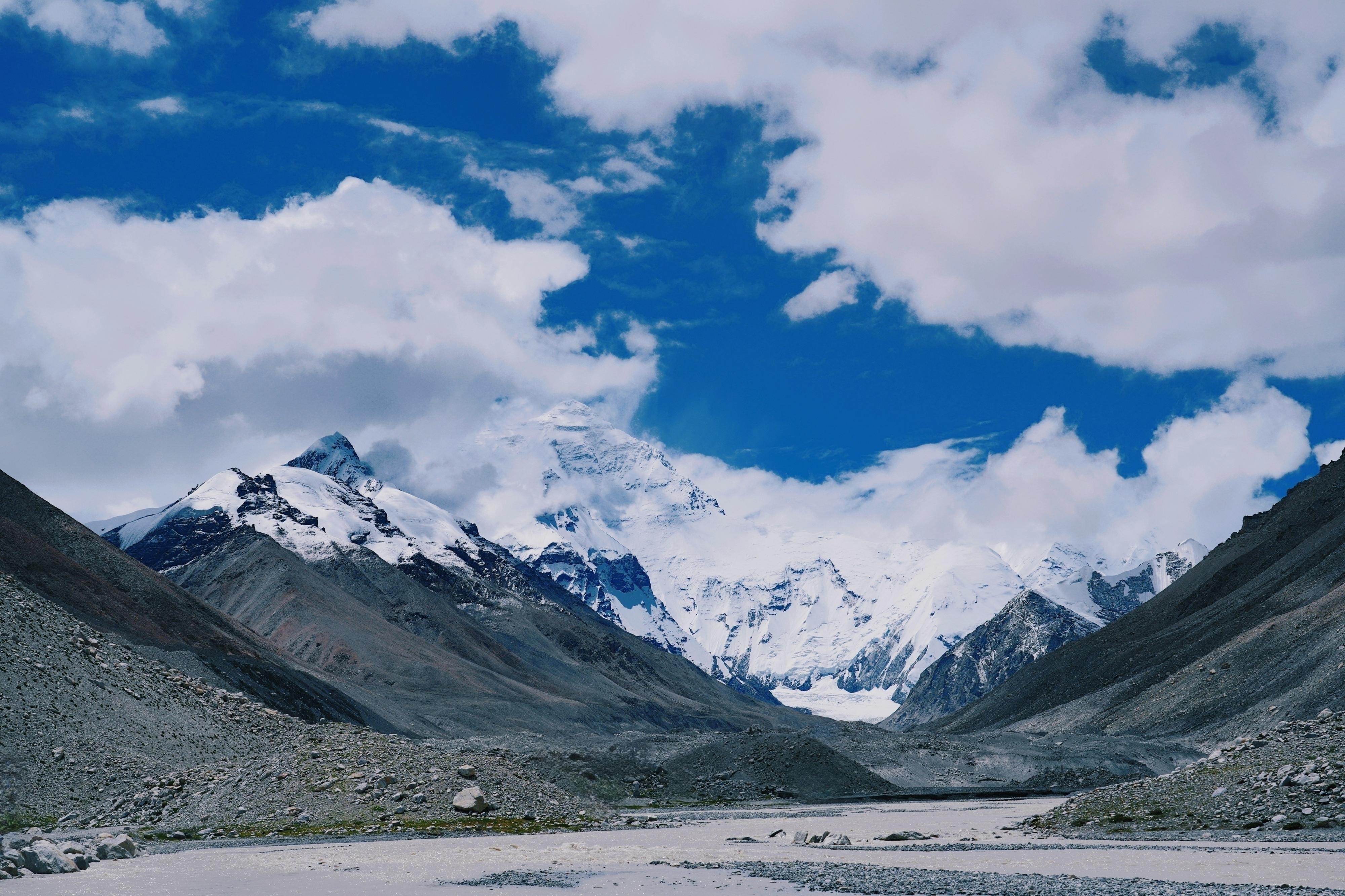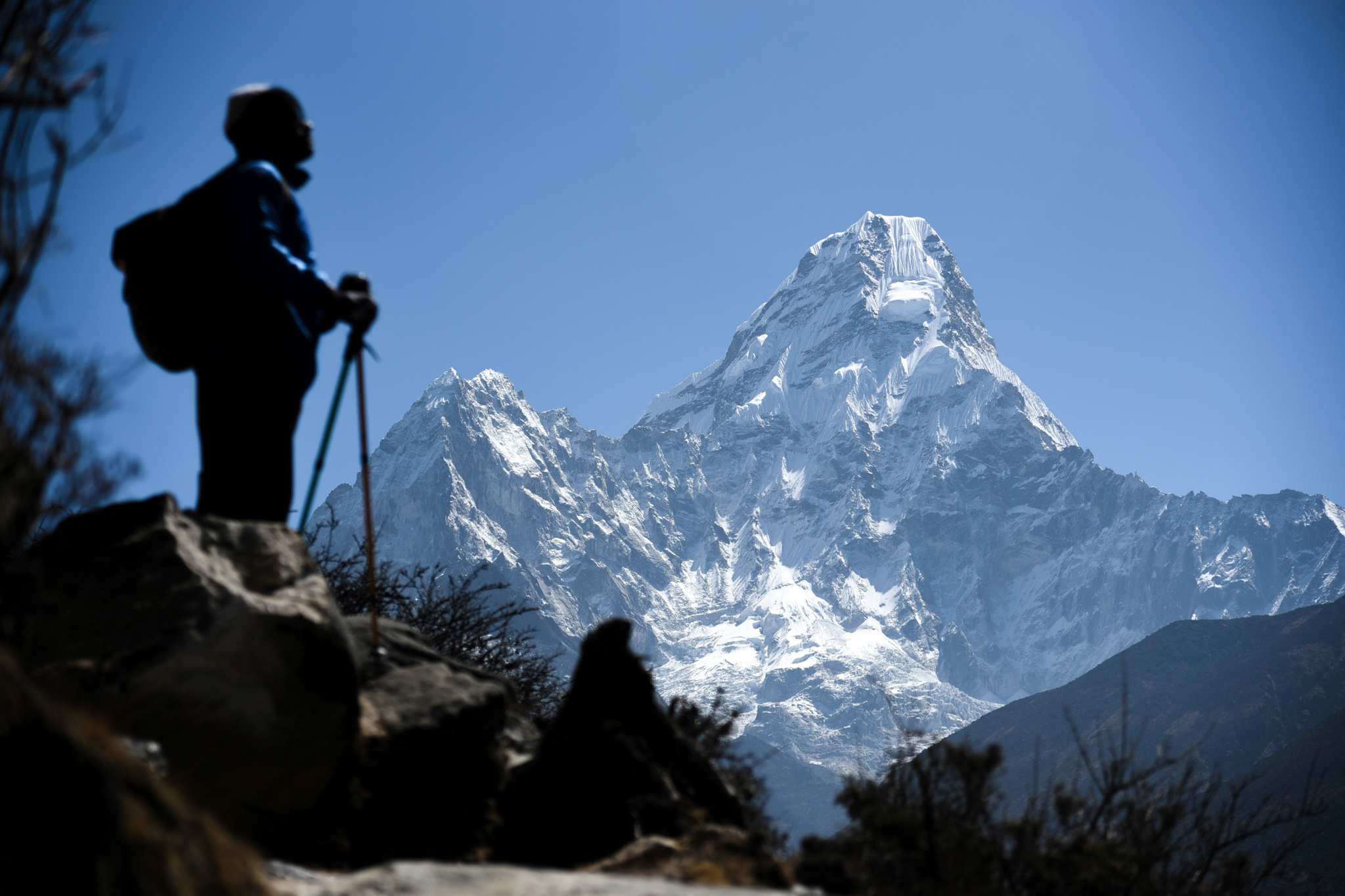Mt Everest's fast growth partly caused by rivers merging 89,000 years ago: study

The Arun River has cut a deep gorge through the core of the Himalayas.
In short:
Mt Everest is getting taller by about 2 millimetres per year, according to GPS measurements.
A new study suggests rivers in the Himalayas merged and gouged away huge amounts of rock, and as the Earth below slowly "bounced back", it elevated Everest by up to 50 metres.
What's next?
Researchers are now studying sediments in the surrounding basin to understand more about the area.
Towering at over 8.8 kilometres tall, Mount Everest is the highest mountain above sea level. But it's not done yet.
The Himalayan peak is currently undergoing a growth spurt — about 2 millimetres per year, according to GPS measurements. This is double the 1mm that historic rock data suggests the mountain should be growing each year.
A study published today in Nature Geoscience suggested a reason for part of this accelerated growth: that when two rivers below joined up around 90,000 years ago, they set in motion large-scale geological changes that raised Mt Everest an extra 15–50 metres.
"This research highlights the complex interplay between different Earth processes," Jingen Dai, one of the study's authors and researcher at the China University of Geoscientists, said.
"This shows how changes in rivers can affect even the world's highest mountain."
Mt Everest, also known as Chomolungma, has grown more than 8 kilometres in the past 30 million years.
Most of this height is due to its location. The Himalayas contain almost all of the world's largest mountains. They were produced by the Indian tectonic plate moving under the Eurasian plate millions of years ago, forcing the edges of the plates — and the land on them — into the sky.
But why Mt Everest is continuing to rise a millimetre a year more than historical data suggests is not well understood.
The Arun River
The Himalayan river network is wide reaching, and includes the Arun River.
"The Arun River … drains a large area to the north of [Mt Everest] before turning south, passing by the world’s tallest peak and cutting a deep gorge through the core of the Himalayas," the researchers wrote in their study.

A hiker at Mount Everest base camp.
The team modelled the river network for the area and how it may have formed.
They found that the "best fit" scenario showed an unknown river merged with the Arun River 89,000 years ago.
Known as "drainage piracy", the combined force of two rivers' worth of water increased the erosion of the Arun River and produced the deep gorge the area is now known for.
But how does rock removal lift a mountain?
Earth pushing back
As huge volumes of water in the Arun River swept rock away and created the gorge, the surrounding area (including Mt Everest) lifted in response, according to Sara Polanco, a geologist at the University of Sydney who was not involved in the study.
"The idea is that the river would have eroded the rock on the mountains, and by removing that, the Earth has to compensate the amount of rock that was removed," Dr Polanco said.
"The Earth then 'bounces back' and creates more uplift."
This phenomena is called "isostatic rebound" and it works like a boat rising in the water as cargo or other weight is removed.
The new study's models found that isostatic rebound may have increased Mt Everest's height by 0.16 to 0.53mm per year.
However, it doesn't explain the full extent of Everest's growth spurt.
The research team behind the new study is now studying a basin in the area to understand exactly what happened to the water and landscape all those thousands of years ago.
"Before the river capture event, the upper Arun River might have been part of a closed basin, possibly even a large lake. If this was the case, the weight of all that water could have been pushing down on the surrounding region. When the river capture drained this hypothetical lake, it would have added another dimension to the uplift we've observed," Dr Dai said.
"It's like reading the region's diary from thousands of years ago, and we can't wait to see what other secrets it might reveal."
Science in your inbox
Get all the latest science stories from across the ABC.Your information is being handled in accordance with the ABC Privacy Collection Statement. By:https://www.abc.net.au/news/science/2024-10-01/mt-everest-elevation-river-kosi-arun-rebound-himalayas/104413448(责任编辑:admin)
下一篇:Japan's incoming Prime Minister Shigeru Ishiba calls election for October 27, seeks to unify party
 Socceroos rescue a point
Socceroos rescue a point  Wallabies thrash Wales 52
Wallabies thrash Wales 52 Jake Paul beats Mike Tyso
Jake Paul beats Mike Tyso Live updates: England vs
Live updates: England vs  US election 2024: Donald
US election 2024: Donald  US election live: Kamala
US election live: Kamala
- ·Karen Read is accused of killing her bo
- ·Two trials in Hong Kong courts unveil c
- ·Israeli army orders Gaza City suburb ev
- ·Three arrested as Israel denounces murd
- ·RFK Jr's critics say his candidacy
- ·Fire destroys 1,000 homes in slum area
- ·Philippine President Ferdinand Marcos v
- ·One person dies after DHL cargo plane c
- ·Karen Read is accused of killing her boyf
- ·Two trials in Hong Kong courts unveil cos
- ·Israeli army orders Gaza City suburb evac
- ·Three arrested as Israel denounces murder
- ·RFK Jr's critics say his candidacy a
- ·Fire destroys 1,000 homes in slum area of
- ·Philippine President Ferdinand Marcos vow
- ·One person dies after DHL cargo plane cra
- ·McLaren, Ferrari and Red Bull battle for
- ·Pop star Ed Sheeran interrupts post-game
- ·One of Vietnam's high-profile politi
- ·Shanghai Walmart Attack: A Man Randomly S
- ·South Korean police officers jailed over
- ·Cambodia publicly shames maid deported af
- ·North Korea to use all forces including n
- ·Philippines condemns China attack of Viet
- ·US adds 2 more Chinese companies to Uyghu
- ·North Korean defector steals South Korean
- ·Malaysia deports Cambodian worker for cal
- ·Rebels battle for Myanmar junta’s weste

